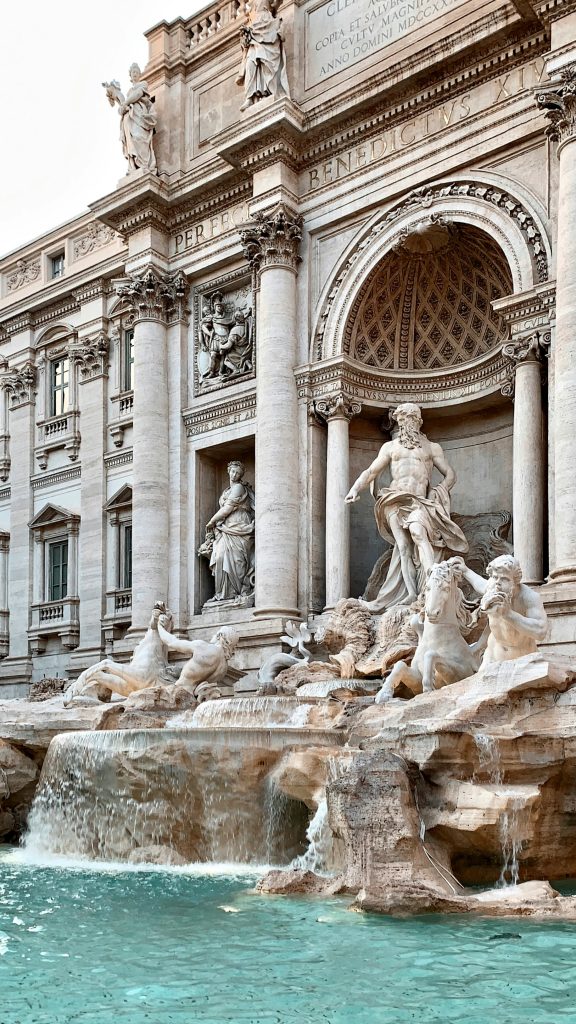The Trevi Fountain is a famous fountain located in the heart of Rome, Italy, and is one of the largest and most renowned fountains in the city. Situated at the intersection of the Trevi district, it is a unique and magnificent architectural masterpiece.
Constructed between 1732 and 1762, the Trevi Fountain was conceived by architect Nicola Salvi and completed with the collaboration of various artists. The fountain showcases a Baroque style, characterized by its luxurious and solemn design. The central theme depicts the sea god Neptune driving a chariot drawn by two seahorses, symbolizing mastery and dominion over the seas.

The Trevi Fountain is renowned worldwide as one of the most famous wishing fountains. Traditionally, visitors toss coins into the fountain with their right hand over their left shoulder, believed to ensure their return to Rome. Every day, thousands of tourists visit the fountain, making it one of Rome’s most popular tourist attractions.
Illuminated at night, the Trevi Fountain creates a mysterious and romantic ambiance. This magnificent piece of art represents the rich history and cultural heritage of Rome, making it a must-visit for tourists exploring the city.

The Trevi Fountain, also known as the Girl Fountain or Wishing Pool, is located south of the Spanish Steps and is the most iconic and largest fountain in Rome. It stands out as one of Rome’s most beautiful sculptural artworks, taking 30 years to complete and being finalized in 1762. With its picturesque appearance, rich decorations, strong three-dimensional sense, and clear flowing water, the fountain emanates grandeur and magnificence. The fusion of elaborate sculptures and cascading water curtains creates a captivating scene, gaining global fame after being featured in the film “Roman Holiday.” If you’re on vacation in Italy, this is a must-visit destination.
Built against the backdrop of the Palazzo Poli, the fountain depicts the theme of Neptune, the god of the sea, returning in triumph. At the center of the seashell-shaped chariot stands Neptune, with two spirited horses being led by two Triton messengers—one on the left, wild and unrestrained, and the other on the right, gentle and calm, symbolizing tumult and serenity, respectively. On either side of Neptune are goddesses representing abundance and health. At the top of the background columns, four goddesses hold different symbols, symbolizing the four seasons.

The Romans, always inventive, created a story that if you stand with your back to the fountain, throw a coin over your left shoulder through the heart, making a wish, you will return to Rome. Repeat the same action with two coins for a chance encounter, and with three coins, your dreams of love will come true. Nowadays, when tourists come here to make a wish, they are advised to follow these prescribed actions. Periodically, a charitable organization collects these coins for charitable purposes.



